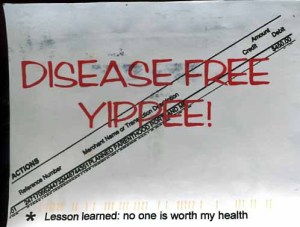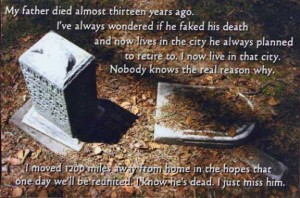To properly celebrate America’s birthday, certain foods are required. The most inscrutable of these culinary staples is Jell-O, an old-timer from the 1950s. Omnipresent yet ignored on many a picnic table, Jell-O manifests itself in various questionable yet patriotic shades, and is packed with similarly questionable fruits. Has the once-proud dessert been sequestered to this sad fate forever?
Never fear! The brave folks in Brooklyn will not let the gelatinous dessert go wobbly into that good night. Recently, down a small, forgettable Park Slope side street, several score amateur Jell-O enthusiasts gathered in the Gowanus Studio Space for the Jell-O Mold Competition, to showcase their imaginative gelatin creations and vie for prizes.
First, there were the obvious edible creations. Along with the predictable shiny apple pie and red velvet cake, artists assembled Jell-O sushi with chopsticks, slid oysters melting on the half-shell, and carved up a delicious trio of multi-flavored fruit wedges molded into the hulls of peeled grapefruits. For the more culinarily adventurous folk, beef- and pork-flavored Jell-O were carved into taxidermy on wooden plaques. (The flavor was dead on, but the consistency was uncannily, unpleasantly reminiscent of jellied gristle.)
Food wasn’t the only source of inspiration. Piles of translucent, horse-pill-sized pharmaceuticals abounded, as did giant LEGOs, floral plates, and lithographs of the Brooklyn Bridge. A vibrantly blue and silver model of the Brooklyn sewage plant drew laughs, while Jell-O-cum-explosives, complete with a video presentation of said explosions, failed to inspire. The entries showed a huge variance in quality, from the impressive cloth-draped and olive-bedecked display shrine for Bloody Mary Jell-O (molded in the shape of the Virgin herself), to wimpy Styrofoam lunch trays supporting globs of what may have been octopi Vikings, but may also have been last year’s meatloaf, grown sentient and resentful with time. My favorite eats included fruity Jell-O Superballs dispensed from a quarter machine, and an impressive full-sized Tiffany lamp, supported by a sugar paste structure and lit with real bulbs. The most inventive creation, edible drinking cups made with vegan-friendly agar agar, could be filled with your drink of choice and then munched on as well, for a multi-faceted imbibing experience.
While the crowd waited for the judges to review the entries, five or six kinds of free Jell-O shots were on hand. The mixologists were enthusiastically inventive, if a bit heavy-handed with their herbs; tough sprigs of rosemary and acerbic strips of orange rind overpowered two of the jiggling shooters. Still, most of the drinks were popular and disappeared quickly: the delightfully zingy Hair of the Naval; Hot Sh*t (its real name), a dark pudding laced with cinnamon and topped with cream; Summer Salad, a gelatinous vodka watermelon; and the non-alcoholic yet pungent Kir Royale.
If this event was any indication, Jell-O will certainly live to fight another day.


















